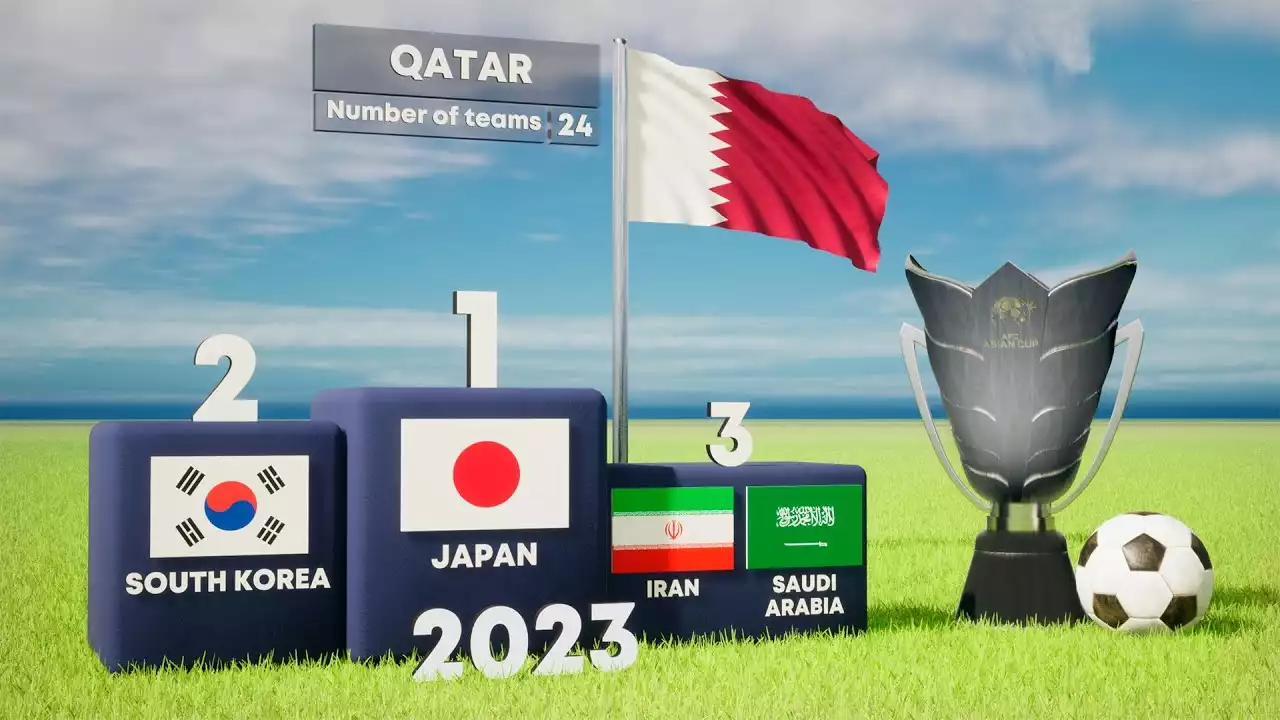Overview of the AFC Asian Cup format
The AFC Asian Cup is one of the most prestigious tournaments in Asian football, showcasing the talent and passion of teams from across the continent. The tournament has a rich history, dating back to its inception in 1956. Over the years, the format of the competition has undergone several changes, some of which have raised eyebrows among fans and experts alike.
Initially, the AFC Asian Cup featured a simple knockout format, with the winner being crowned the champions. However, as the popularity of the tournament grew, so did the need for expansion and innovation. The organizers recognized the potential to create a more inclusive and exciting competition, leading to the introduction of various format changes.
First puzzling format change - The expansion to 24 teams
One of the most puzzling format changes in the history of the AFC Asian Cup was the decision to expand the tournament to include 24 teams. Traditionally, the tournament featured a smaller number of teams, allowing for a more focused and intense competition. However, the expansion brought about significant changes, both in terms of the tournament structure and the quality of the matches.
The main rationale behind the expansion was to provide more opportunities for teams to participate and showcase their talent. However, critics argue that the increase in the number of teams dilutes the overall quality of the tournament. With more teams involved, there is a higher likelihood of lopsided matches and mismatches in terms of skill levels.
Second puzzling format change - The decision to hold the tournament in odd-numbered years
One of the most head-scratching decisions made by the AFC was to shift the AFC Asian Cup from even-numbered years to odd-numbered years. This change broke away from the long-established pattern and disrupted the expectations of fans and players alike.
The decision to change the tournament year was primarily driven by a desire to avoid conflicting with other major football competitions, such as the FIFA World Cup and the UEFA European Championship. However, the sudden shift in schedule created confusion among fans and affected the momentum of the tournament. Additionally, players had to adjust their training and preparation schedules, which could potentially impact their performance on the field.
Third puzzling format change - The implementation of the three-group stage format
In another surprising move, the AFC Asian Cup introduced a three-group stage format, adding another layer of complexity to the tournament. This change meant that teams had to navigate through a group stage before advancing to the knockout rounds, increasing the number of matches and raising the stakes for each team.
While the three-group stage format aimed to provide more opportunities for teams to showcase their abilities, it also brought about its fair share of challenges. The increased number of matches meant that teams had to carefully manage their squad rotations and player fatigue. Additionally, the format change introduced the potential for tiebreakers and complicated scenarios, further adding to the confusion and unpredictability of the tournament.
Fourth puzzling format change - The removal of the quarterfinals stage
Perhaps one of the most baffling format changes in recent years was the removal of the quarterfinals stage from the AFC Asian Cup. Traditionally, the tournament consisted of a knockout stage with quarterfinals, semifinals, and a final. However, the decision to remove the quarterfinals stage and directly advance teams from the round of 16 to the semifinals left many fans puzzled.
The main reason behind this change was to streamline the tournament and reduce the number of matches. By eliminating the quarterfinals stage, the organizers aimed to create a more compact and intense competition. However, this change disrupted the traditional structure of the tournament and deprived fans of the excitement and drama that the quarterfinals often bring.
Analysis of the impact of these format changes on the tournament
The format changes implemented in the AFC Asian Cup have had a significant impact on the dynamics of the tournament. While some changes have been well-received and added excitement to the competition, others have generated confusion and debate among fans and experts.
The expansion to 24 teams, for example, has allowed for more nations to participate and gain exposure on the Asian football stage. However, critics argue that the increase in the number of teams has diluted the overall quality of the tournament, leading to more one-sided matches and diminishing the competitiveness of the event.
Similarly, the decision to hold the tournament in odd-numbered years has disrupted the established rhythm of the competition. While the intention was to avoid clashes with other major tournaments, the change has created confusion among fans and impacted the momentum of the tournament.
The implementation of the three-group stage format has brought both benefits and challenges. On one hand, it has provided more opportunities for teams to showcase their abilities and increased the number of matches. On the other hand, it has introduced complexities and potential tiebreaker scenarios, making the tournament more unpredictable and confusing.
The removal of the quarterfinals stage has streamlined the tournament and reduced the number of matches. However, it has also deprived fans of the excitement and drama that the quarterfinals often bring, disrupting the traditional structure of the competition.
Reactions from fans and experts to the format changes
The format changes in the AFC Asian Cup have sparked diverse reactions from fans and experts alike. While some embrace the changes as a way to keep the tournament fresh and exciting, others are skeptical and yearn for a return to the traditional format.
Fans who support the expansion to 24 teams argue that it provides more opportunities for smaller nations to participate and grow their football programs. They believe that the tournament should be inclusive and give a chance for underdog teams to shine on the Asian stage.
However, critics of the expansion argue that it dilutes the overall quality of the tournament. They believe that a smaller number of teams would result in a more intense and competitive competition, with higher-quality matches and fewer mismatches.
The decision to hold the tournament in odd-numbered years has received mixed reactions. Some fans appreciate the effort to avoid scheduling conflicts with other major tournaments, while others find the change disruptive and confusing. Players and coaches have also expressed concerns about the impact on their preparation and performance.
Fans and experts have differing opinions on the implementation of the three-group stage format. Some appreciate the increased number of matches and the opportunity for teams to prove themselves in a group setting. Others find the format confusing and believe that it adds unnecessary complexity to the tournament.
The removal of the quarterfinals stage has been met with mixed reactions as well. Some fans appreciate the streamlined format and the reduction in the number of matches. However, others miss the excitement and drama that the quarterfinals often bring and feel that the change disrupts the traditional structure of the competition.
Final thoughts on the AFC Asian Cup format changes
The AFC Asian Cup has undergone several format changes over the years, some of which have been puzzling and controversial. While these changes aim to enhance the overall fan experience and keep the tournament fresh and exciting, they have also generated confusion and debate among fans and experts.
It is important for the organizers to strike a balance between innovation and tradition, ensuring that any format changes are well thought out and consider the impact on all stakeholders. The AFC Asian Cup is a platform for Asian football to shine, and it is crucial to preserve its integrity while embracing new ideas.










